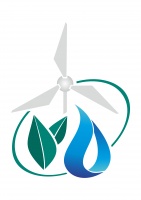Внедрение принципов интегрированного управления водными ресурсами (ИУВР) на малой трансграничной реке Аспара
| Заголовок | Внедрение принципов интегрированного управления водными ресурсами (ИУВР) на малой трансграничной реке Аспара |
|---|---|
| Категория инструментов | Принцип общественного участия |
| Сфера использования практики | Использование водных ресурсов |
| Пригодность практики для адаптации к изменению климата | Высокая |
| Кем реализована практика | АМР США/РЭЦЦА |
| Где использована практика |
Страна: Кыргызстан |
| Также практика применяется в следующих местностях |
Казахстан Бассейн реки Аспара |
| Специфика местности |
Трансграничная река |
| Когда использована практика |
Дата начала: 01.04.2012 Дата окончания: 31.10.2016 |
| Проблема, которая решается применением практики |
Несовершенство механизма руководства водой в бассейне трансграничной малой реки Аспара |
| Примененные в практике инструменты |
Принцип вовлечения заинтересованных сторон в процесс принятия решений по руководству водой на малой трансграничной реке. Методика планирования ИУВР |
| Описание практики и ее результаты |
Река Аспара берет начало в Западном Тянь-Шане на территории Кыргызстана, течет к северу, пересекая границы с Казахстаном. Общая длина реки Аспара составляет более чем 44 км и его водосборная площадь составляет около 66 км2. Бассейн реки Аспара находится в Чуйской области на северо-западе Кыргызстана и Жамбылской области в Южном Казахстане. Несколько разных национальностей живут и работают на этой территории. Население быстро растет, а также и сельское хозяйство. Во многих местах, особенно, ниже по течению, качество воды не отвечает стандартам и санитарным нормам. Сточные воды от населения, промышленности, животноводства, а также твердые отходы являются основными источниками загрязнения окружающей среды. Деятельность проекта осуществлялась в Жамбылской области Республики Казахстан и в Чуйской области Кыргызской Республики. Мероприятия: Созданы группы заинтересованных сторон – Малые Бассейновые Советы (МБС) – как с казахстанской стороны реки, так и с кыргызской. В МБС вошли представители местных властей, НПО, водопользователи и местные жители. Были созданы 2 бассейновых советов по реке Аспара. Прошло 6 совместных заседаний Советов. Таким образом, была сформирована площадка для обмена мнениями, информацией и разработки совместных решений по улучшению ситуации в бассейне реки Аспара. Кроме того, реконструированы гидрометрические посты, проведена их аттестация, создана автоматизированная система учета распределения водных ресурсов по каналу Майлыбай. Реконструирована система водоснабжения в селе Чолок-Арык. Был создан демонстрационный участок на основе фермерского хозяйства «Равшан», который орошается из канала «Майлыбай», где было установлено оборудование капельного орошения. Результаты: Таким образом, созданием национальных Малых Бассейновых Советов (МБС) реки Аспара была сформирована площадка для обмена мнениями, информацией и разработки совместных решений по улучшению ситуации в бассейне реки Аспара.
|
| Какие уроки и рекомендации можно извлечь из практики |
Уроки: Внедрение принципа ИУВР является условием стабильного и равноправного водообеспечения вне зависимости от местоположения водопользователя. Рекомендации: В настоящее время, когда местные заинтересованные стороны, представленные в МБС, вовлечены в процесс руководства водой, нужно продолжить работы по укреплению потенциала МБС, чтобы они стали более действенными. В перспективе, возможно, появится необходимость и возможность создания совместного органа руководства водой по всему бассейну реки. |
| Источник практики |
Зарубежные инструменты (передача зарубежного опыта) |
| Краткая информация о проекте |
Одним из основных элементов интегрированного управления водными ресурсами является разработка и реализация Бассейновых планов. Важным преимуществом ИУВР является функционирование механизма межведомственной координации через создание бассейновых советов или координационных групп. Такой подход позволяет обеспечить четкую координацию и синергизм действий на всех уровнях иерархии управления. Название: «Партнерство заинтересованных сторон в совместной разработке политики: Содействие трансграничному сотрудничеству на малых водоразделах в Центрально Азии» Продолжительность: Апрель 2012-Октябрь 2016 Цели и задачи: Внедрение практики интегрированного управления водными ресурсами (ИУВР) в трех трансграничных водоразделах и её распространение в Центральной Азии. Получатели выгод от его реализации: Население малых трансграничных бассейнов Аспара, специалисты водных и природоохранных ведомств, фермеры Структура, ответственная за реализацию проекта: USAID-РЭЦЦА Донор: USAID |
| Источник финансирования практики | АМР США (USAID) |
| Источники информации о практике | |
| Дата заполнения | 09.08.2017 |
| Распечатать Сравнить с другой практикой |




